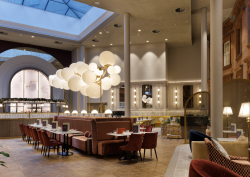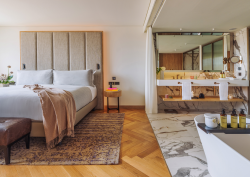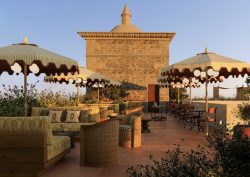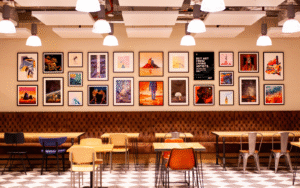With its design by S+A (Saraiva + Associados), the Hotel DUO Boavista creates a narrative that intertwines the past and present in the heart of Lisbon…
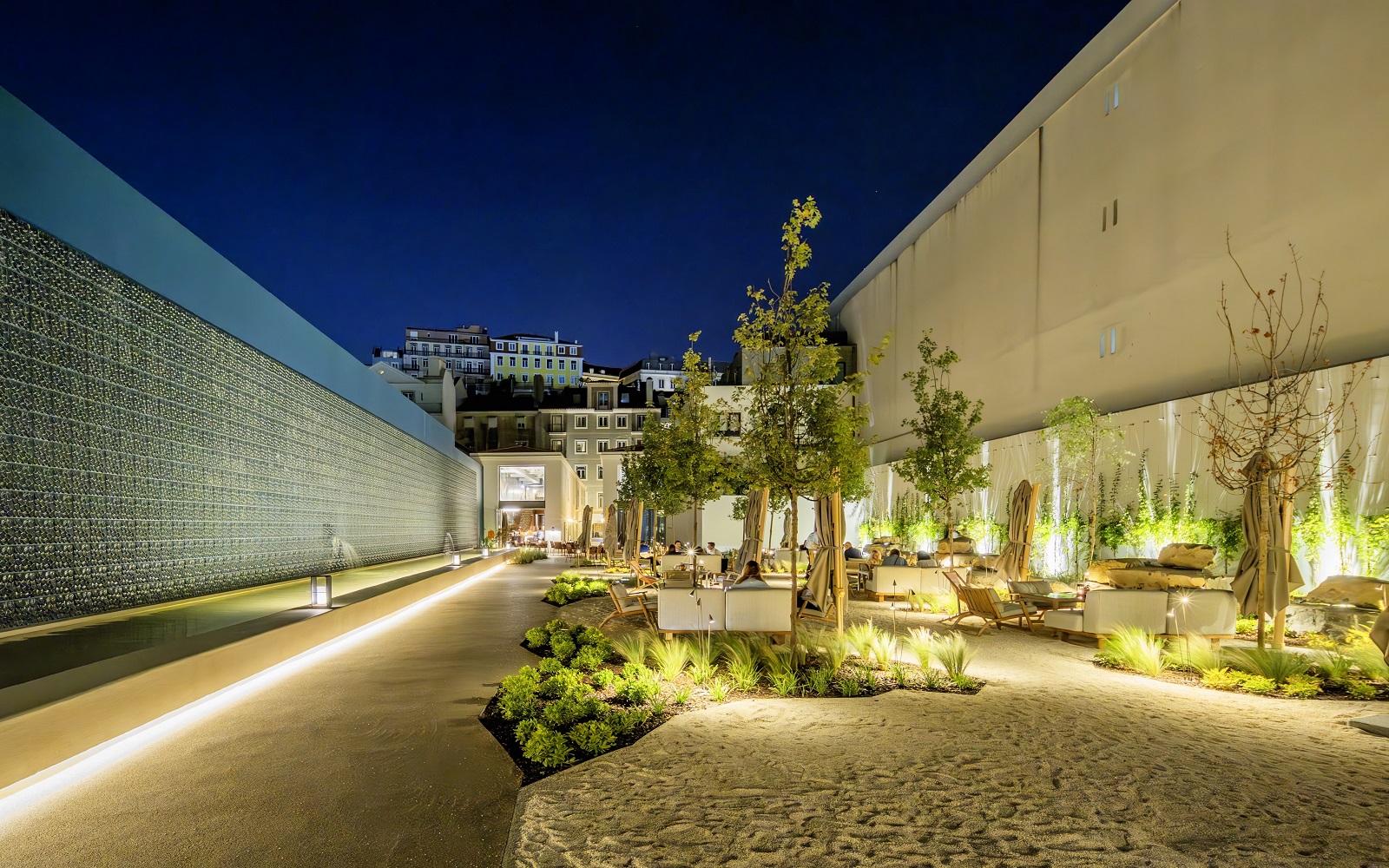
The concept of Hotel DUO Boavista, a new member of the Curio Collection by Hilton, centres on the seamless connection between two distinct architectural spaces, blending historic charm with modern design. DUO represents the balance between traditional and modern Portuguese architecture.
The first building, a classic Pombaline structure on Rua da Boavista, has been elegantly restored to honour Lisbon’s architectural heritage. Characterised by traditional tiled facades, thick masonry walls, vaulted ceilings, and wooden structural beams, Pombaline architecture reflects Lisbon’s resilience and aesthetic ingenuity developed after the 1755 earthquake, with an emphasis on both durability and elegance.
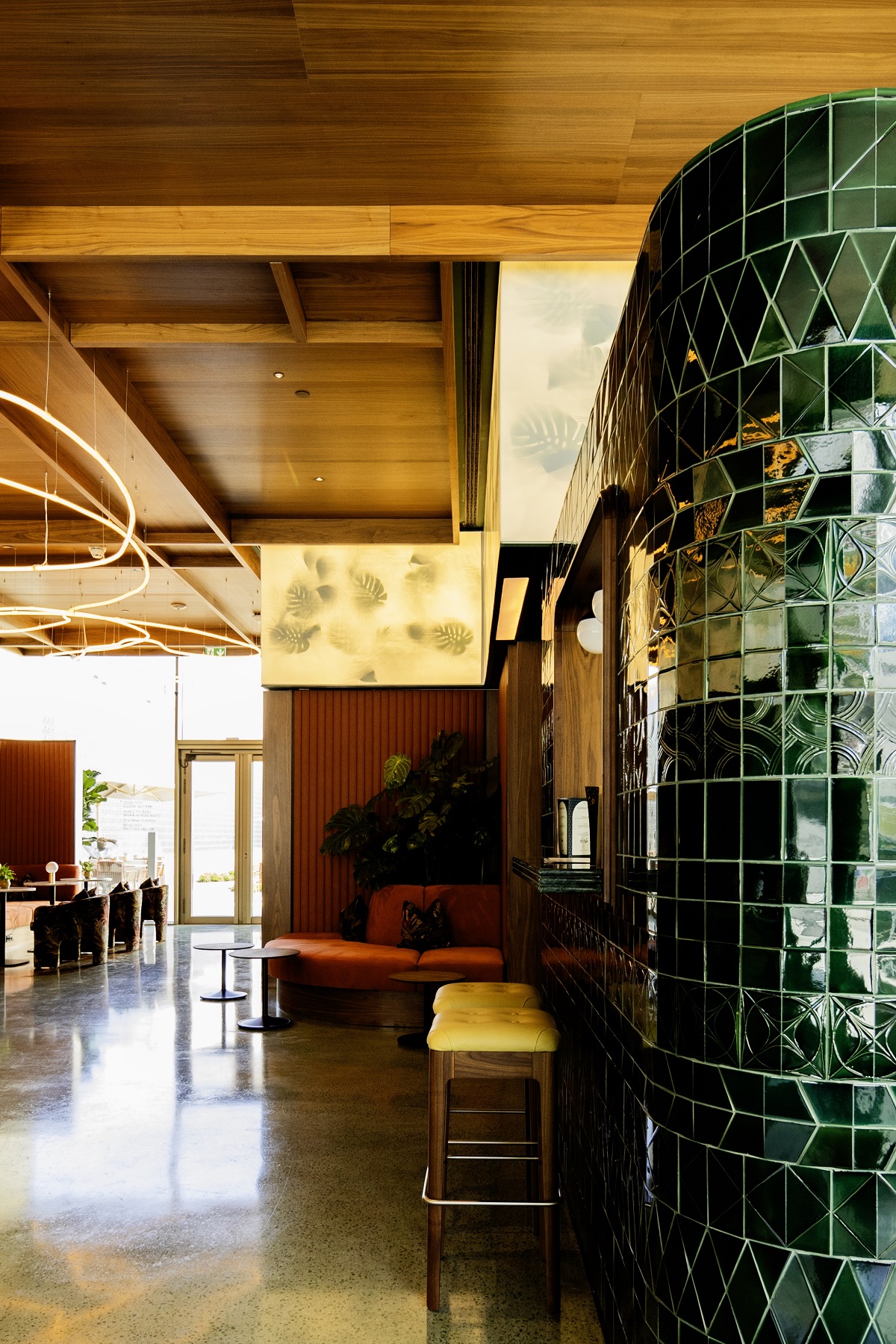
Image credit: Rita Feria
This restored building houses cosy guest rooms, a charming pastry shop, and an inviting living room, all infused with a timeless atmosphere. In contrast, a newly constructed building facing Rua D. Luís, embodies a contemporary style. It hosts the hotel’s vibrant lobby and a sophisticated bar, designed to complement the neighbouring historic structure while offering modern comforts.
Connecting these two unique spaces is a landscaped public walkway that invites guests and locals alike to enjoy a tranquil urban oasis. This thoughtfully designed pathway links the refurbished building to the contemporary one, creating a serene environment where the hotel’s public areas converge, including the restaurant, bar, meeting room, and restrooms. Here, guests can experience Lisbon’s unique blend of past and present, brought together in the heart of the city.
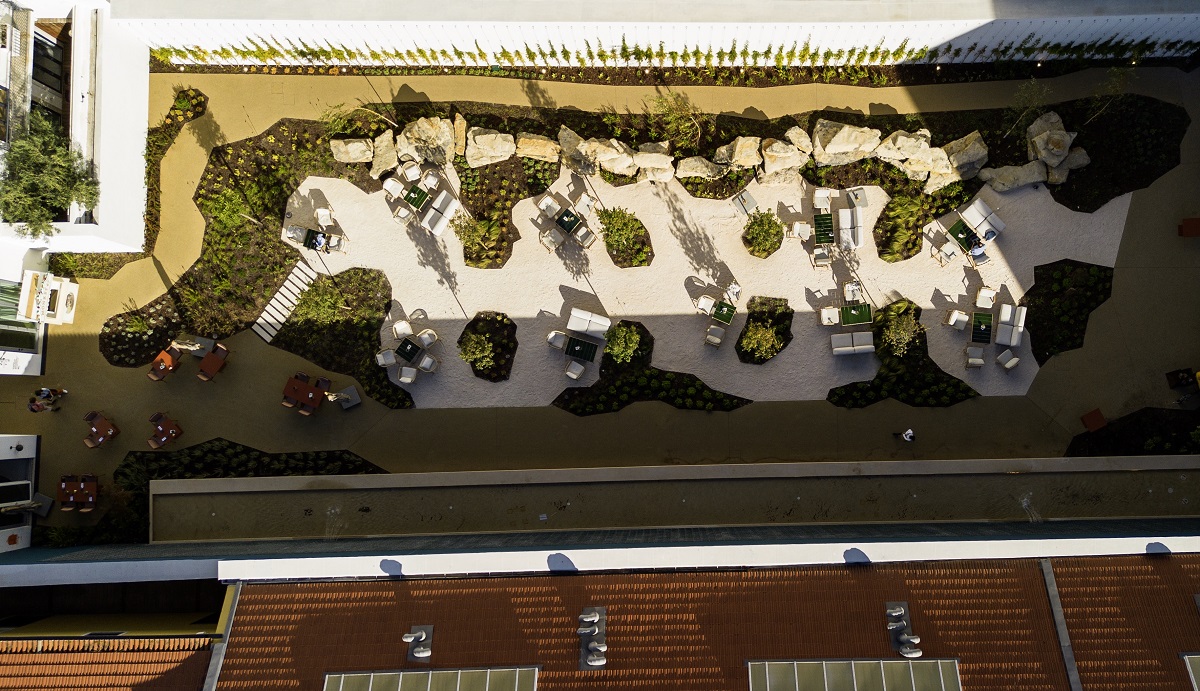
Image credit: Rita Feria
The interior concept of the Hotel DUO Boavista continues the ode to old and contemporary Lisbon. In the Pombaline building, original elements such as plaster ceilings and traditional tiles have been carefully preserved, creating a classic and elegant atmosphere. The headboards, designed by Lisbon-based studio Pedrita, feature hand-painted tiles, while the wooden floor and arched shapes evoke the building’s storied history.
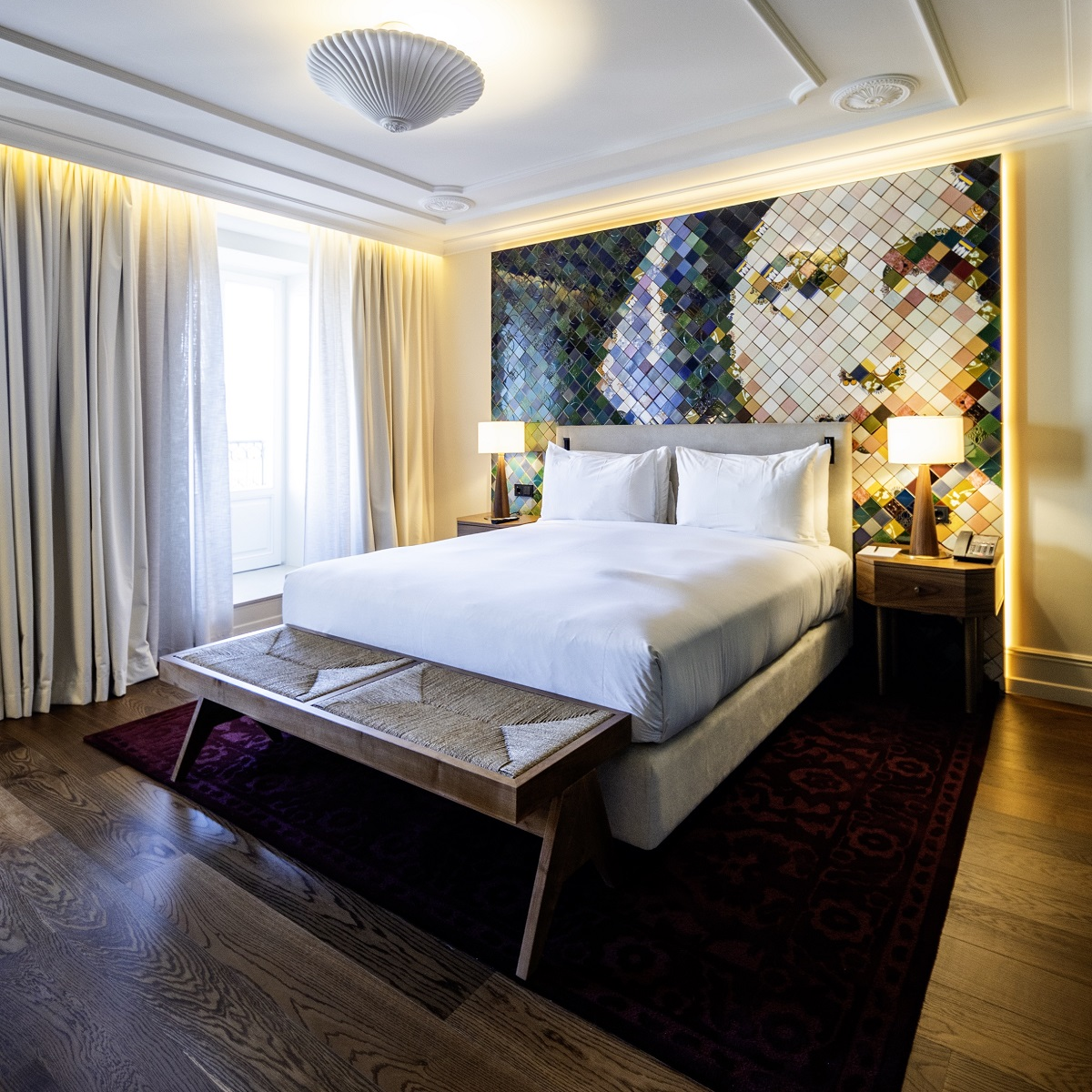
Image credit: Rita Feria
The new building, in turn, displays a modern and cosmopolitan aesthetic. Relief tiles are an ode to the past with a modern sensibility and contemporary graphic patterns adorn the walls, complementing the flooring that extends to the garden. The lobby, bathed in natural light, provides a sense of continuity with the outdoor space, framing the view of the garden. The lobby area, covered with striking tile patterns and lighting features, adds a touch of Lisbonaire charm. The pastry shop, located on the historic building, facing Rua da Boavista, evokes Lisbon’s classic cafés, with refined wood panelling, a velvet upholstered bench, and stone floor with classic limestone arches.
-

- Image credit: Rita Feria
-
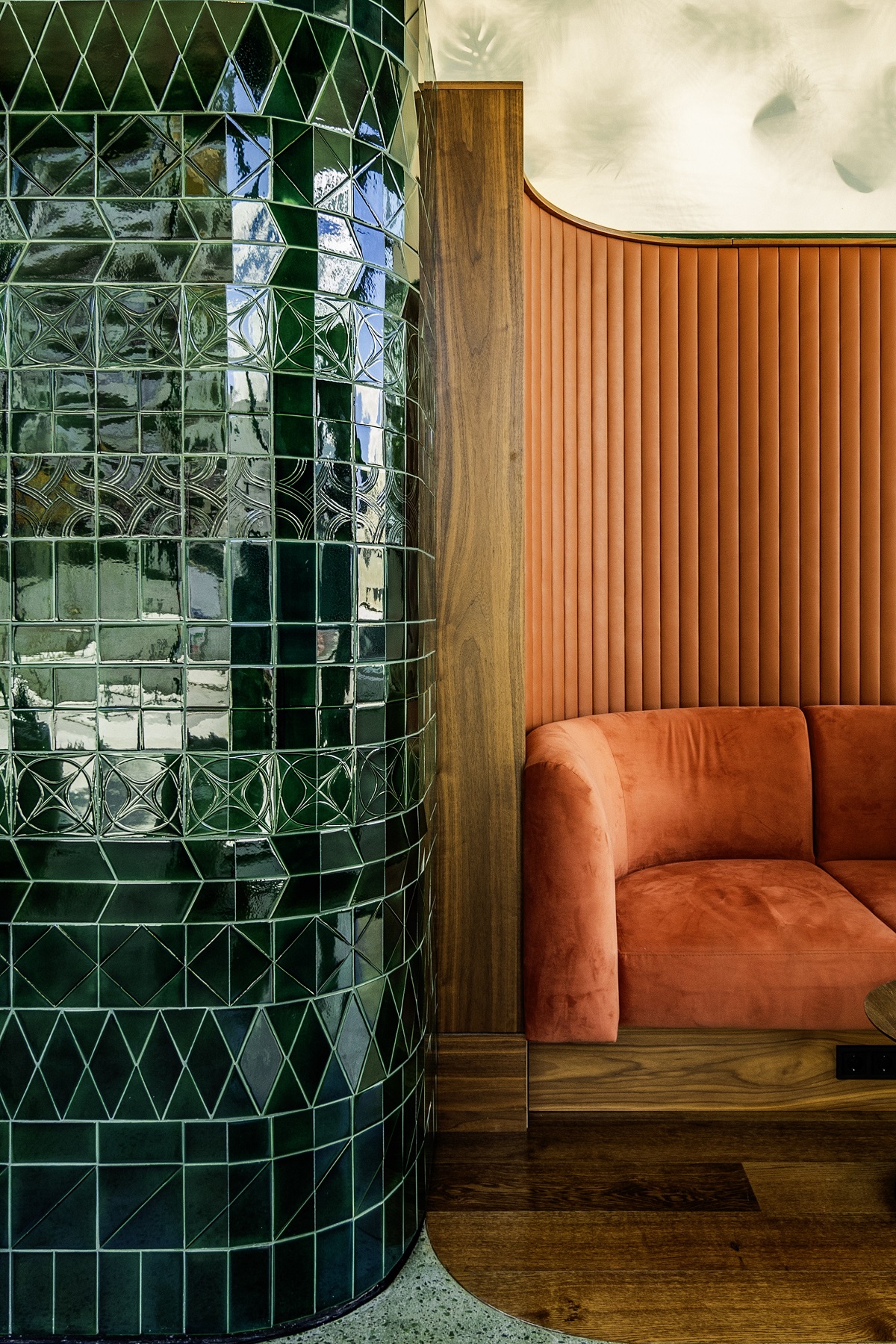
- Image credit: Rita Feria
Each detail has been carefully curated to create a welcoming atmosphere exuding the city’s personality. The restaurant and bar celebrate the fusion between classic and contemporary. A vibrant mural by renowned artists Nabla & Zibe brings bold colour and energy to the space while walnut wood, classic geometric tiles, and a carpet with an organic pattern create an eclectic and inviting atmosphere.
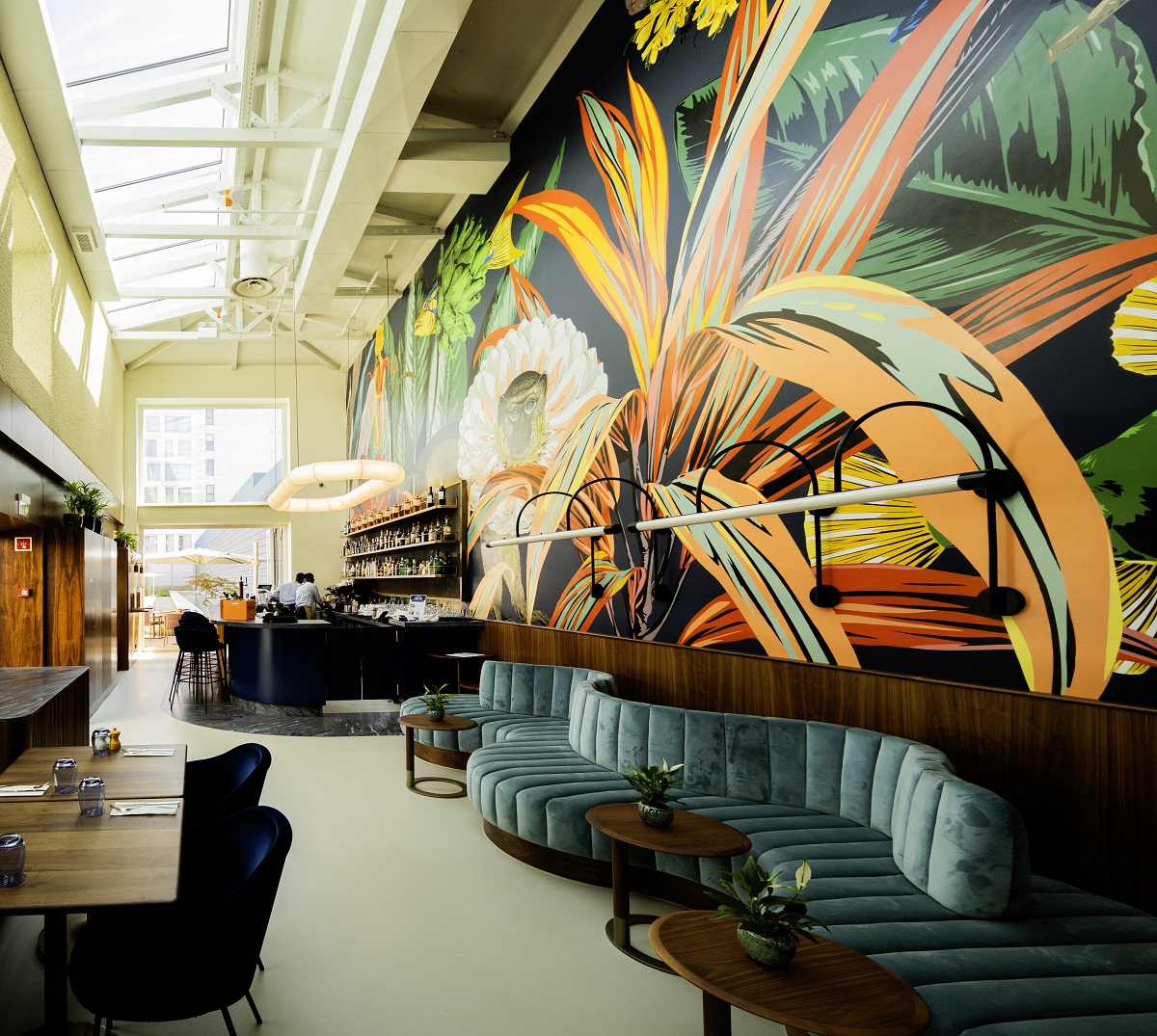
Image credit: Rita Feria
Nestled in the mesh of Lisbon’s bustling cityscape, the DUO Hotel Lisbon stands as an urban model of innovation, earning LEED Gold accreditation. This achievement stems from a unique blend of building restoration along with thoughtful new construction. Prioritising sustainable urban mobility, the hotel features inviting outdoor leisure spaces with lush greenery and shaded retreats. Its sustainability strategy is meticulously designed, achieving a minimum of 45 per cent reduction in water usage and boosting energy efficiency by at least 26per cent. Additionally, recycled materials cover a remarkable 25 per cent of the project’s surfaces, reinforcing the hotel’s commitment to a greener, more sustainable city.
Main image credit: Rita Feria





